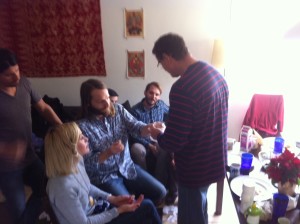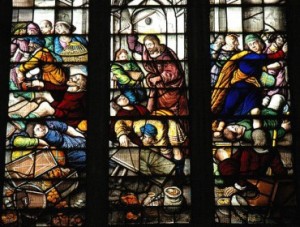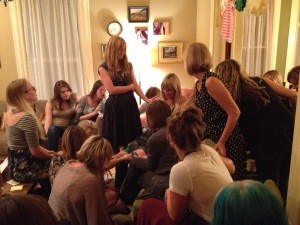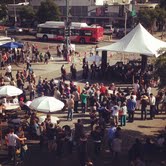 I was down in Mexico a few years ago for a gathering of peers who are leading faith communities around the world. It was a rich time of conversation, encouragement and visioning.
I was down in Mexico a few years ago for a gathering of peers who are leading faith communities around the world. It was a rich time of conversation, encouragement and visioning.
Walking through a local Mexican neighborhood between sessions, something struck me. While those of us in the Minority World (often called the 1st or Western World) are thinking and talking about our theology, most of the folks in the Majority World (often called the 3rd World) have no choice but to simply live into their theology. Talking about our theology, faith and practice in lecture halls, church buildings and conference rooms is a luxury that the vast majority of Jesus followers in the world have no opportunity to participate in.
It’s not necessarily a bad thing, but it is reality. And those of us with this luxury better own up to it, because it is easy for us in the West to think we have a corner on the market of theology, which we then project (whether consciously or subconsciously) onto the rest of the world. But whose to say theology built in academia is any more valid than theology build in the realities of everyday life?
When I’m hanging out with my Jesus following friend who lives and serves in a West Bank refugee camp, it would make no sense for me to debate atonement theories, eschatological interpretations or the latest “hot button” issue. There is no time for my friend to concern himself with those things when right in front of him people are committing suicide from depression, going hungry on the streets and feeling the endless effects of war. My friend believes in the crucified and risen Jesus and is doing anything he can to live out the Jesus’ story in the place he has been entrusted.
In this context, theological debates not only seem secondary, they seem like a distraction from faithful life and practice.
Now, I’m NOT saying that academia, study and debate are bad things. No, they are essential for a robust faith than fuels the community of God for mission in the world. Personally, I am enlivened by academia and some of my most formative development has come about in this context. With that said, the classroom of real life relationships – with those who live and practice in context FAR different than my own – have been much more significant to my development than any lecture, book or debate.
In short, I would argue that our theology must be as much formed and informed by everyday practice than it is by academic research. Now, I know there is no prefect balance here, but those of us in the West would do well to at least keep this in mind as we speak and write in our somewhat insular reality.
Since I had this realization on the streets of Mexico, I have committed to only/primarily communicate “lived content.” “Theoretical content” is somewhat easy to come up with, it doesn’t require a lived expression and, to be honest, there is already WAY too much of this floating around. I want to be known for smoking what I’m growing (I’m sitting in Denver as I write this, so this metaphor seemed especially relevant. Don’t be offended).
As communicators (and we are ALL communicators whether we like it or not), producing “lived content” is an act of discipleship. We have to submit our words to the lives we are actually living as we stumble toward Jesus.
Are we to be marked by our compelling words and thoughts or by our transformative actions embodied in the realities of everyday life? I don’t think it’s an either/or, but a both/and.
Lists seem helpful, so here you go:
Damage of Communicating Only/Primarily Theoretical Content
1. We fall victim to a war of rhetoric. It’s easy to have strong opinions if they are divorced from embodied practice in the realities of everyday life. Think of all the ridiculous “debates” we see on social media that not only take away time from real life advocacy, but create the illusion that we are actually offering something constructive and helpful to the community of God. For example, it’s easy to “talk” about abortion or war or whatever. But are we walking with the single mothers who are most prone to abort their babies or just telling them not to do it? Are we only calling out militarism in our culture or actually living out an alternative?
2. Theoretical content is removed from reality and its implications for our global village. What happens as a result is we come out of our “classrooms” (seminary, churches, etc.) with all the “answers” and begin to project our words and opinions on others. It is not formed in the context of relationship and it is not only narrow-minded, it is destructive.
3. Creates in us a false identity of who we’ve convinced ourselves we are rather than who we actually are created to be. When we talk more than we live, there is a temptation to form our identity around what we think or say rather than who we were created to be in the world.
4. We live through others opinions of us rather than through a rooted set of practices that create space for us to live out true self and calling. When we communicate more than we live, we will inevitably open ourselves up to the opinions of others, whether positive or negative. If we aren’t rooted in everyday practice, it is easy to begin to believe we are who others say we are rather than our true identity as sons and daughters of the Father.
Gift of Communicating Lived Content
1. Keeps us rooted in a community of practice. We can’t “go rogue” and begin to live an autonomous life than produces a bunch of content that hasn’t been refined by the fire of real life.
2. Holds us accountable to lead with a way of life rather than an articulate vision. There are ALOT of good communicators today. While that is a gift, it can also be a curse. A good vision is only as good as the positive implications it has on the lives of those around us.
3. Ignites the imagination and practice of those who hear you communicate. The world and the Church is STARVING for content that is actually being lived out. There are more resources based on theoretical proposals than ever before. What we need are stories that inspire and practices that sustain for the long haul.
4. Ultimately, we get to actually experience and live life to the fullest. Our most faithful expression of following Jesus is not spoken, but embodied.
Producing “lived content” is not only my commitment, it is my struggle. And I don’t think I’m alone. Will you link arms with me and stumble forward together?




